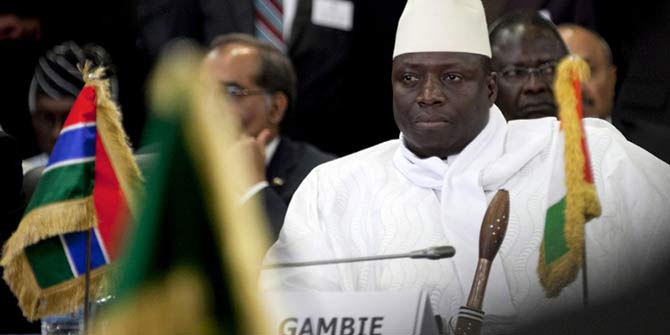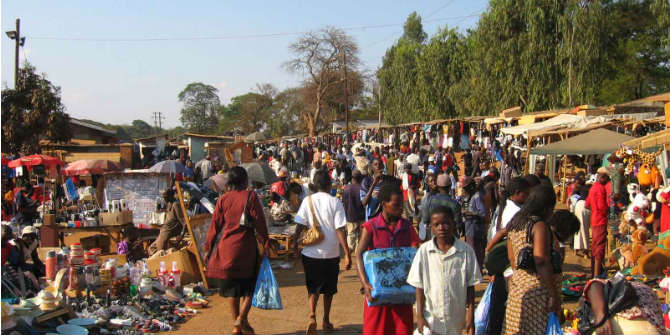IMF’s Roger Nord shares some thoughts on how African countries can reverse the current economic downturn.
The Great sub-Saharan African Take-off
For nearly two decades starting in the mid-1990s, sub-Saharan Africa posted high rates of growth, averaging 5 to 6 per cent per year across the continent. After the lost decade of the 1980s, when per capita incomes fell, many countries seemed to have turned a new leaf. Poverty rates fell and many social indicators, ranging from infant and maternal mortality to educational attainment, improved.

Not Just a Commodity Story
This was not just a commodity story. While high prices of primary commodities surely helped some, the growth acceleration was spread across many different countries. In fact, the fastest growing countries tended to be those without natural resources. Countries like Ethiopia, Uganda, Mozambique, and Rwanda, all expanded rapidly despite the absence of natural resource exports. Rather, what seems to have driven the strong performance was a combination of a supportive external environment and good domestic policies. Debt relief cleared the deck. Sound economic policies brought down inflation, benefiting both business investment decisions and the poor, who often are the least able to protect themselves against rising prices. Broadening the tax base provided countries with more resources to tackle social and infrastructural challenges. And stronger and deeper financial sectors provided much-needed credit to growing private sectors. All of these factors spurred foreign and domestic investment, fueling economic growth and job creation.
The Slowdown
Now growth in sub-Saharan Africa is set to slow sharply to its lowest level in more than 20 years. The IMF forecasts growth of 1.5 per cent for 2016 and only a modest recovery in 2017. Lower commodity prices, and the ongoing rebalancing of China’s economy, are having a dramatic impact especially for Africa’s oil exporters, such as Nigeria and Angola.
A tale of two Africas
But in many ways, it is a tale of two Africas. While oil exporters and, to a lesser extent, mineral exports are hard-hit, other countries continue to do well.
Non-resource-intensive countries—close to half of the countries in sub-Saharan Africa—benefit from lower oil import prices. And improvements in the business environment and scaled-up infrastructure investment still fuel strong growth. Countries such as Côte d’Ivoire, Ethiopia, Senegal, and Tanzania continue to grow at more than six per cent.
Adjust to the present, invest for the future
- So what must Africa do to regain the momentum of the past two decades and avoid falling back into a boom-bust pattern? For commodity exporters, adjustment to the new reality is inevitable. Exchange rates need to depreciate to reflect the changed fortunes of their main exports and foster the development of new, competitive sectors. Public spending needs to decline, to adjust to lower revenues, but at the same time, countries need to make strong efforts to broaden their tax base. In Nigeria, before the slump in oil prices, the oil sector accounted for less than 15 percent of GDP, but oil revenue represented two-thirds of government revenue. Broadening the tax base to better capture the vibrant non-oil sector would be an important step to safeguard critical public spending.
- Beyond the short term, all African countries need to invest in the future by taking steps now that ensure strong, inclusive growth in the coming two decades. I see four key priorities.
- There remains ample scope for broadening tax bases, not just in oil exporters. Recent IMF research suggests that on average, countries could raise 3-6 percent of GDP in additional revenue, which would reduce dependence on fickle capital inflows and foreign aid.
- Urgent steps are needed to strengthen Africa’s competitiveness. Infrastructure, notable in the energy sector, falls well short of what is needed to foster the emergence of globally competitive businesses. A key priority needs to be to accelerate Africa’s integration into global value chains.
- Growth needs to become more inclusive. Reducing inequality, notably of gender, could potentially boost economic growth in sub-Saharan Africa by 1 percentage point of GDP per year.
- Africa needs to prepare to harness the demographic dividend. By 2035, half of the new labour market entrants will come from sub-Saharan Africa. This young population can be a boon for economic development, notably in light of aging populations in the rest of the world. But the gain is not automatic: it will require supportive policies, both economic and social, to ensure that demographic change is a dividend not a burden.
So yes, Africa is still rising. The current downturn is an immense challenge. But by successfully addressing this challenge and taking steps to invest in the future, Africa can regain a path of strong and inclusive growth that creates jobs and raises living standards.
Roger Nord is a Deputy Director in IMF’s African Department.
The views expressed in this post are those of the author and in no way reflect those of the Africa at LSE blog or the London School of Economics and Political Science.






